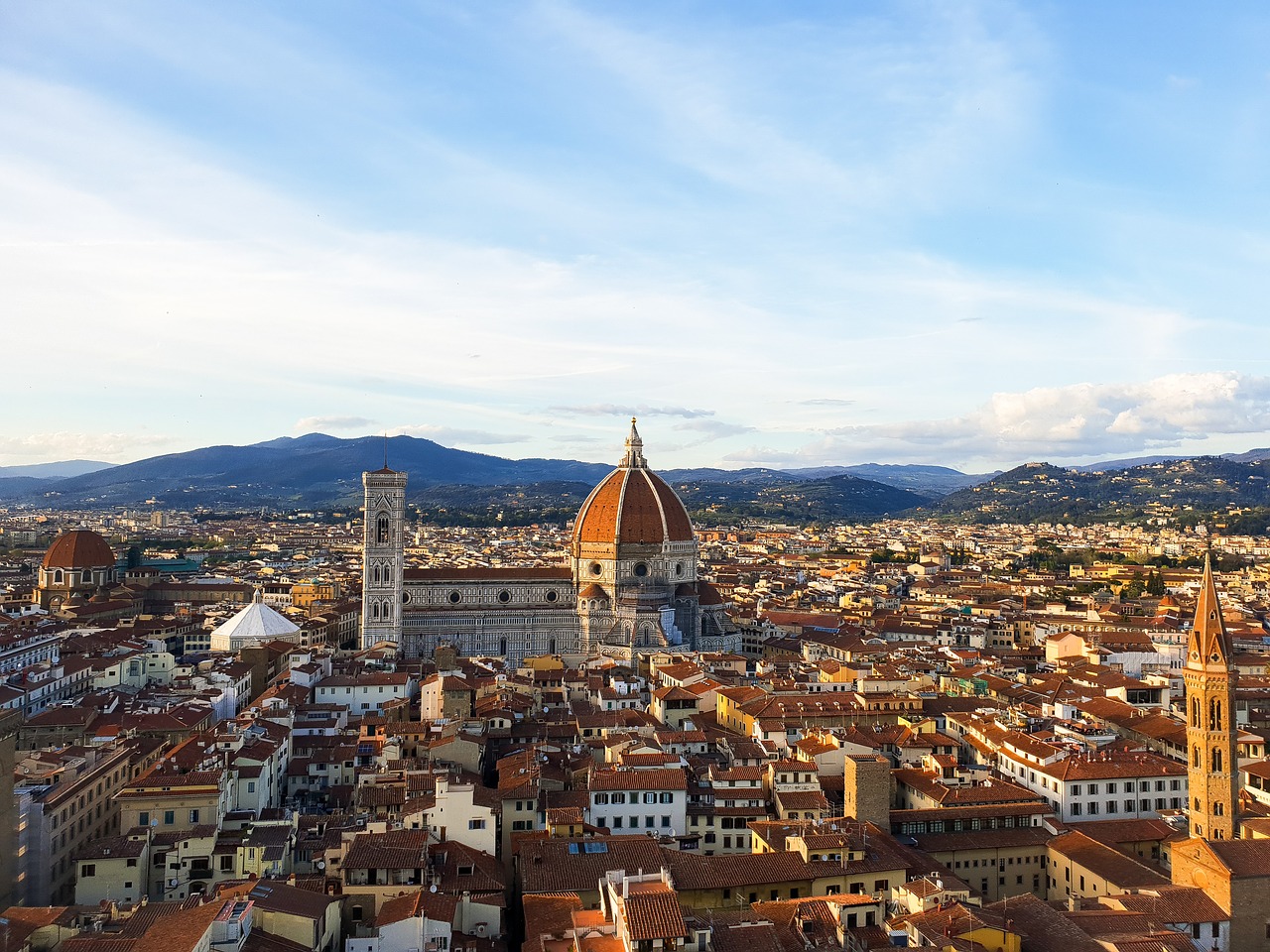
Notes of Architecture: the unmistakable Renaissance style

At the beginning of the 15th century Florence became the most powerful city in Tuscany and one of the richest and most important in Europe. It was then that in all the arts, including architecture, the unmistakable Renaissance style was born.
Renaissance style in architecture
The architecture of the Renaissance originated at the beginning of the fifteenth century in Florence, mainly thanks to the work of some artists and intellectuals such as Filippo Brunelleschi and Leon Battista Alberti.
Among the political and cultural factors that influenced this new direction of the arts there were the affirmation of the lordships and the development of Humanism, with the consequent antiquarian and philological taste, which in architecture translates into the study of the beautiful forms of ancient buildings, that is, Romans.
Although the movement is temporally well defined, inside it is possible to identify different stylistic moments, which critics identify in the “early Renaissance”, belonging to the fifteenth century, in the “Classical Renaissance” and in Mannerism, the latter both coinciding with the sixteenth century.
The protagonists of Renaissance architecture
Filippo Brunelleschi
Filippo Brunelleschi (1377-1446) is considered the “father of the Renaissance“. Brunelleschi began his career as a sculptor and in fact participated in the 1401 competition for the second door of the Baptistery of Florence: an event that marked the beginning of the Renaissance adventure. Later he decided to move to Rome to study ancient architecture with the aim of discovering the secrets of classical art.
In 1419, Brunelleschi designed the first orphanage in Europe, the Ospedale degli Innocenti. The building overlooks Piazza della Santissima Annunziata, with its elegant columned portico.
In 1420, Giovanni dei Medici commissioned Brunelleschi to design a funeral chapel for his family, in the early Christian Basilica of San Lorenzo.
With the Portico degli Innocenti and the Old Sacristy, Brunelleschi made one of the greatest revolutions in Western cultural history. Moreover, he was the first to create a new professional figure as an architect: no longer a consultant specialized among many artisans, but a true intellectual professional responsible for the entire executive process, which included the realization of details.
Leon Battista Alberti
Leon Battista Alberti (1404-1472) was one of the most important intellectual architect of the Renaissance. He was a man of boundless culture, capable of passing, without apparent effort, from literary studies to philosophical or philological and artistic studies.
He had the great merit of developing a solid theory of the new art and of the new Renaissance architecture, supporting the practice of colleagues, often conducted through attempts and experimentations, with rules derived from his studies of ancient texts.
Alberti was therefore a great artist but first of all a great theoretician, to him we owe three very important texts on art and architecture:
- De Pictura;
- De Statua;
- De Re Aedificatoria.
Florence is the cradle of the Renaissance, an unmissable visit and a living testimony of the unmistakable Renaissance style in architecture, sculpture and painting. Its museums and palaces offer the chance to admire the wonders of Renaissance artists.
To admire the Renaissance architecture and culture in full relax, we are waiting for you at Villa Campestri Olive Oil Resort, a magnificent villa surrounded by greenery just 35 km from Florence.
Quick Booking snippet
Tuscany, an Italian region renowned for its cultural and historical wealth, is home to numerous UNESCO World Heritage Sites. These sites represent not just the architectural and artistic beauty of the region but also its significant historical heritage.
Italian cuisine, celebrated globally, is a mosaic of flavors and traditions. From the rolling hills of Tuscany to the bustling streets of Naples, each region contributes its unique essence to what we recognize as Italian cuisine. This culinary journey explores how history, culture, and regional diversity have shaped the renowned gastronomy of Italy.
Tuscany is world-renowned for its rich winemaking tradition, a heritage rooted in centuries of history and culture. In this detailed guide, which is like a true oenological journey, we will discover not only the fine wines of the region but also the traditions and landscapes that make Tuscany an unmissable destination for wine lovers.
In the heart of Italy, Tuscany stands out as one of the most emblematic regions for wine production. Famous for its landscape of gentle hills, cypress trees, and picturesque villages, this region is also a paradise for wine lovers. Tuscan vineyards, nourished by fertile soil and an ideal climate, produce wines that are appreciated worldwide […]
For those looking for a firsthand experience, the Agricultural Tourism Company Badia di Susinana offers horseback rides and trekking and riding courses with a guide, in addition to hospitality for horses and riders, located in Palazzuolo sul Senio. Alternatively, the Farm I Cavalli del Vento allows crossing beech forests and vast chestnut groves, with rides […]
Sport fishing in Tuscany offers a wide range of opportunities due to the abundance of inland and coastal waters in the region. Specifically, the province of Pistoia, with Lake Nievole in Serravalle Pistoiese, is renowned for trout fishing and other fish such as carp, grass carp, tench, and sturgeon, with a catch and release rule. […]
In Val di Chiana, to savor an authentic Chianina steak, there are several renowned restaurant options: 1. Ristorante Casa Cecco: Offers the chance to taste a Chianina steak in a farmhouse dating back to 1600. 2. Agriturismo di Trequanda: Here, Chianina meat, raised in local pastures and processed by the company’s trusted butcher shop, becomes […]
The Italian Quattrocento was a period of extraordinary artistic effervescence that produced numerous world-renowned artists. Among them, some of the most influential were: 1. Andrea Mantegna (1431–1506): A painter and engraver from Padua, famous for his frescoes in the Camera degli Sposi in Mantua.
